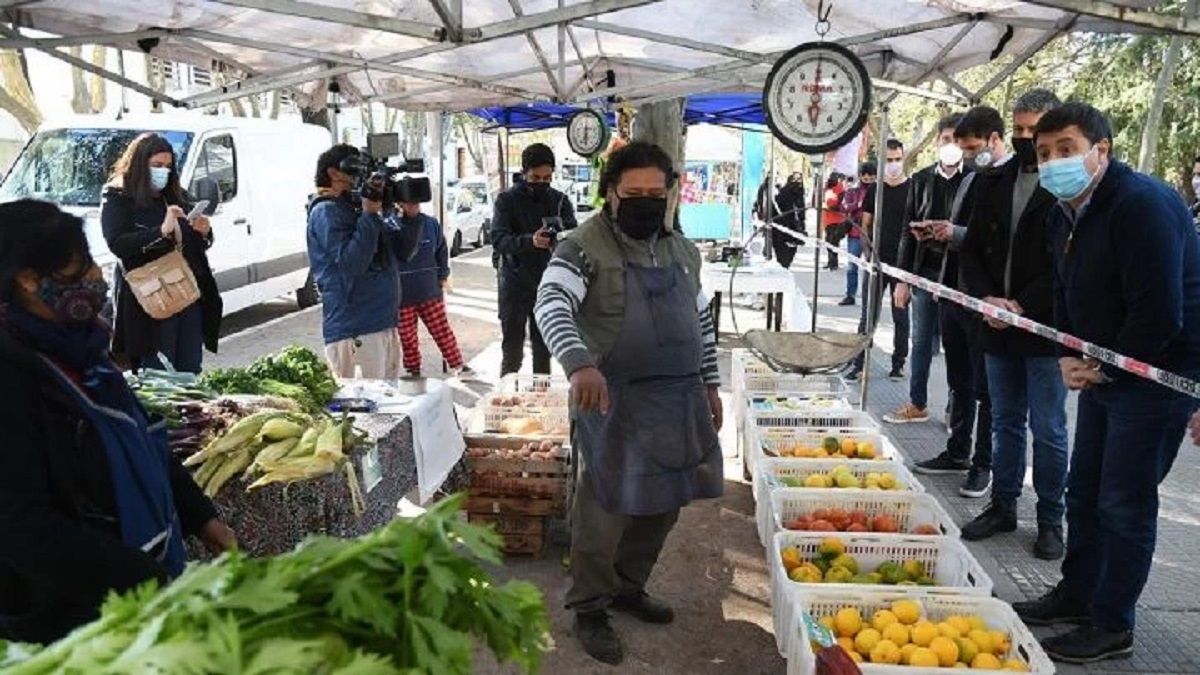In this regard, from the Observatory for Provincial Development (ODeP), an NGO made up of professionals from different disciplines who work in both the public and private sectors, they prepared a report in which they graphed the situation with figures. According to his survey, in the country three companies concentrate 91% of the production of oils; three companies 85% of sugar production; only one is responsible for 79% of the manufacture of noodles; two companies account for 82% of flour production; two meet 98% of all soft drinks; and only one concentrates 70% of milk production.
“This level of concentration is not the product of one or two years, it is a process of decades. And that occurs globally. Concentration occurs, both in production and marketing. And this produces the exclusion of producers and, via prices, the exclusion of many consumers who find it impossible to access certain foods. And that is reflected in the indicators of poverty and indigence”, explained Javier Cernadas, one of the authors of the report.
Look
Along the same lines, months ago The Argentine Political Economy Center (CEPA) produced a report in which it analyzed the “concentration in the marketing chain in Argentina.” “The existence of companies with dominant positions in sectors of essential consumption is not only an important conditioning factor for determining prices on the shelves, but for the entire production and marketing chain,” the report said.
“Considering inflation as a multi-causal phenomenon, concentration is not its unequivocal cause, but it can be a very determining additional factor. Not only does it have a direct impact on the formation of the final price paid by consumers, but it also operates indirectly on other factors, such as the profit margins of the different links in the production chains”highlighted another part of the study.
As an example, the CEPA survey (with information referring to the year 2016), indicated that 74% of the turnover of the products of the gondolas corresponded to only twenty companies.
On the other hand, when analyzing the different sectors, from CEPA they pointed out that in the period between 2016 and 2019, three firms (Mastellone, Sancor and Danone) explained almost 75% of the turnover of the dairy sector. As for the non-alcoholic beverage segment, three companies (Coca-Cola, ADA and Pepsico) shared 85% of the sector’s turnover. In the category of refrigerated and frozen products, three firms (BRF, Swift and Molinos Río de la Plata), shared 60% of the total billing. Meanwhile, in oils, the companies Molinos Ríos de la Plata, Molinos Cañuelas and Aceitera General Deheza accounted for 90% of the turnover.
When analyzing the impact of this type of concentration on prices, Hernan Letcher, director of CEPA, told Scope: “The oligopolistic structure ‘per se’ does not imply that there may be an inflationary process. In fact, in other countries this is not necessarily the case. What this structure does allow oligopolies is a strong margin to manage who wins and who loses, especially in processes of price tension. And that not only affects the final consumer via price increases, but also within the chain”.
In this sense, the application of the Gondola Law, which among other aspects promotes an equitable distribution in the gondolas of the different providers, could be useful. “It is a tool that generates an environment of greater competition. It’s good, but you don’t have to fall in love with the Gondolas Law to solve the problem of tension in prices. The Law of Góndolas means that, for example, if an SME wants to enter the noodle market, which is frankly oligopolistic, and knows that it is going to be hidden behind, it is difficult for it to prosper. If they guarantee that they would have similar conditions of competition with the oligopoly, perhaps they will make the investment and enter that market”, concluded Letcher.
Source: Ambito
David William is a talented author who has made a name for himself in the world of writing. He is a professional author who writes on a wide range of topics, from general interest to opinion news. David is currently working as a writer at 24 hours worlds where he brings his unique perspective and in-depth research to his articles, making them both informative and engaging.




